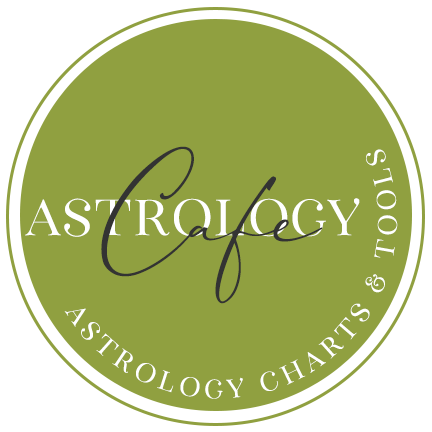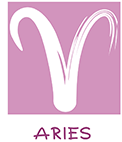Solar Returns 3
Interpreting solar returns
Predictive Astrology – Techniques for Predicting the Future
On this Page:
-
The question of precession
-
Location of Solar Returns
-
More interpretation techniques for Solar Returns
-
Forecasting and worry
Solar Returns Feature: Page 3
On page 1 of our Solar Returns Feature, we offered our preferred techniques and key points to consider when interpreting Solar Returns, as well as an example Solar Return.
On page 2 of our Solar Returns Feature, we offered a second example of a Solar Return at work.
On page 4 of our Solar Returns Feature, we offer interpretations of the Ascendant sign in the Solar Return chart, as well as the natal house brought to the Solar Ascendant.
On page 5 of our Solar Returns Feature, we offer interpretations of the Solar Return Sun in aspect to other Solar Return planets and points.
On page 6 of our Solar Returns Feature, we discuss the importance of the Moon in the Solar Return chart, by sign, house, and aspect.
On page 7 of our Solar Returns Feature, we compare books and suggest resources for interpreting Solar Returns.
On this third page of our Solar Returns Feature, we discuss some finer points of Solar Return analysis and calculation, and address the tendency to worry about upcoming ominous-looking Solar Return charts.
To Precess or Not to Precess?
Some astrologers precess their tropical Solar Return charts. Eshelman, in his book, Interpreting Solar Returns (1), promotes this idea. Mary Fortier Shea’s book Planets in Solar Returns (2), is based on Solar Returns that are tropical, Placidus, and non-precessed. In Identifying Planetary Triggers (4), Celeste Teal suggests that either method works.
I work with tropical charts, and, like Fortier Shea, I do not precess Solar Return charts. I have experimented with precessing, but I am not comfortable with the idea, and have personally seen better results with non-precessed charts. It makes sense to me that I use tropical non-precessed Return charts, since I use tropical charts in all of my astrology work.
Location of Solar Return Chart
When working with Solar Returns, where the native lives at the time of the return is generally the location used for the Solar Return chart.
More Considerations/Interpretation Techniques
If you study Solar Returns and find them as intriguing as I do, you will likely want to fine-tune your analyses. On the first page of this Solar Return feature, I listed some of what I feel are the key considerations for interpreting Solar Return charts. In addition to these considerations, there are many different factors to consider that will help you with “fine-tuning”.
Consider the aspects that SR planets are making. Let’s say SR Venus is conjunct the SR Ascendant. One might jump to the conclusion that the native may find romance, or that it will be an especially social or romantic, in the year ahead. If SR Saturn is squaring that Venus, and Saturn is, for example, on the IC, this may in fact be a reclusive yearone in which the native’s lack of social life or romantic life may be an issue or a preoccupation.
I find the Vertex and the Nodes of the Moon prominent when important contacts are made. I have frequently seen, for example, SR Venus in tight conjunction to SR Node in the Solar Return chart before meeting a “significant other”, as well as SR Venus tightly square the Nodal axis, and SR Vertex tightly conjunct the natal Vertex.
If you want to look more closely at a particular area of life, such as finances, study the Solar Return 2nd house. Look at the ruling planet of the sign on the second house and where it is posited, as well as the aspects it makes. If health and habits are areas of concern, study the sixth house in a similar manner, and so forth.
Finding the natal ascendant sign on the Solar Return ascendant is significant. That year may be one in which we find ourselves relying on ourselves, focusing on our needs, and expressing ourselves as individuals. When the reverse is true, that is, when the natal descendant sign is on the Solar Return ascendant, we might feel we are dependent on others during that period.
Qualities of the Houses and Signs
When many planets (approximately 5 or more) are found in angular positions, and to some extent when there are an unusual number of planets in cardinal signs, the year can be a very busy oneperhaps too busy to the point that the native feels there just isn’t enough time to plan ahead or think things through. Poor decision-making may be a consequence.
A preponderance of planets and angles in mutable signs and/or planets in cadent houses suggests a period of time when the native needs to adapt to little and frequent changes. The changes may not be quite as dramatic as the ones associated with cardinal/angular Solar Returns, but they can take their toll if the native is, for example, a largely fixed personality. The native may be in a preparation phase. This is generally a good year for tending to details. Instead of being reactive, which is more likely when there is a preponderance of cardinal/angular planets, the native is proactive. The down side of this condition is a feeling that one is busy but not knowing where things are heading.
A preponderance of planets in fixed signs and/or succedent houses can be indicative of a year when things don’t change very much, and/or when the native is in a building phase. It may be a particularly stable year. Impulsiveness is far less likely with this condition than if there is a preponderance of cardinal/angular planets in the Solar Return.
Of course, considering the overall feel of the SR chart in this way is best when you compare it with the natal chart. A Solar Return chart that is predominantly cardinal and angular is likely to be more dramatic for a fixed personality than it would be for a cardinal/angular personality, who would feel quite comfortable with the energy of the year.
With a strong emphasis on angular houses (houses 1, 4, 7, and 10), the year can be a time of new beginnings, much action, and a lot of attention. The first 4 months of the year ahead may be most active.
With a strong emphasis on succedent houses (houses 2, 5, 8, and 11), this is a year of developing, building, and overall stability. Some resistance to change is likely, and inertia may dominate. Months 5 to 8 (that is, five to eight months after your birthday) may be most active.
With a strong emphasis on cadent houses (houses 3, 6, 9, and 12), there is a tendency to scatter energies, feel somewhat restless yet directionless, and it could be a year of some obscurity. Months 9 to 12 (that is, the last 4 months of the year) may be most active.
Cardinal signs generally indicate new initiatives, physical activity, and some impulsiveness. Fixed signs can indicate some clinging to things the way they are, and some inertia. Mutable signs predominating suggests some sociability, indecisiveness, procrastination, and scattering of energies.
Hemisphere Emphasis
If the east side of the chart is strong, the individual feels in control of his or her destiny, makes decisions, and may feel empowered. If the west side of the chart is strong, the individual may feel he or she doesn’t have (or doesn’t exercise) his or her free will.
If most planets are above the horizon (with the possible exception of a heavy emphasis on the twelfth house), there is a focus on external events, public life, and social and business concerns. If below the horizon, this can be a more introspective and subjective year.
A Note on Forecasting and Worry
There may also be a tendency to worry about “heavy” planets in a prominent position in a Solar Return chart cast for the future. When I was a young(er!) adult, I remember taking a look at my Solar Return chart for the upcoming year, and worrying about SR Pluto conjunct the Midheaven, tightly squaring SR Moon in the 7th house. In that same SR chart, Sun, Venus, and Mars were all in the 8th house. The chart looked ominous to me! What happened that year was certainly life-changing, as the direction of my career changed, I moved, and I met a man who I later married, but none of these things, at the time, were things I considered negative. In hindsight, I look back to that time and think perhaps I was a little hasty with my decision-making, but none of the events of that year warranted the kind of worry I put myself through.
Whenever we use astrological forecasting methods, it is always important to remember that we should really be doing these analyses in order to better prepare ourselves. We should try to avoid getting ourselves into a tizzy over things that “might be”. Always keep in mind the idea that we have free will and we have choices. It’s perhaps easier said than done, but looking into the past and applying “forecasting” techniques on the years behind us can certainly help alleviate some of the worry. If we see that we survived a year with an ominous-looking Solar Return chart, it is easier to relax about the upcoming ones.
Next: Interpretations of Solar Return Ascendant Signs ![]()
Back to Predictive Astrology Main Page
We have Solar Return computerized reports that examine any given Solar Return chart piece by piece. We have two different styles, and each report is $4.95. Read more.
References & suggested further reading:
(1) Interpreting Solar Returns by James A. Eshelman.
(2) Planets in Solar Returns: Yearly Cycles of Transformation & Growth by Mary Fortier Shea.
(3) Solar Returns Formulas & Analyses by Nance McCullough.
(4) Identifying Planetary Triggers: Astrological Techniques for Prediction by Celeste Teal.
Back to Predictive Astrology Main Page
![]()











